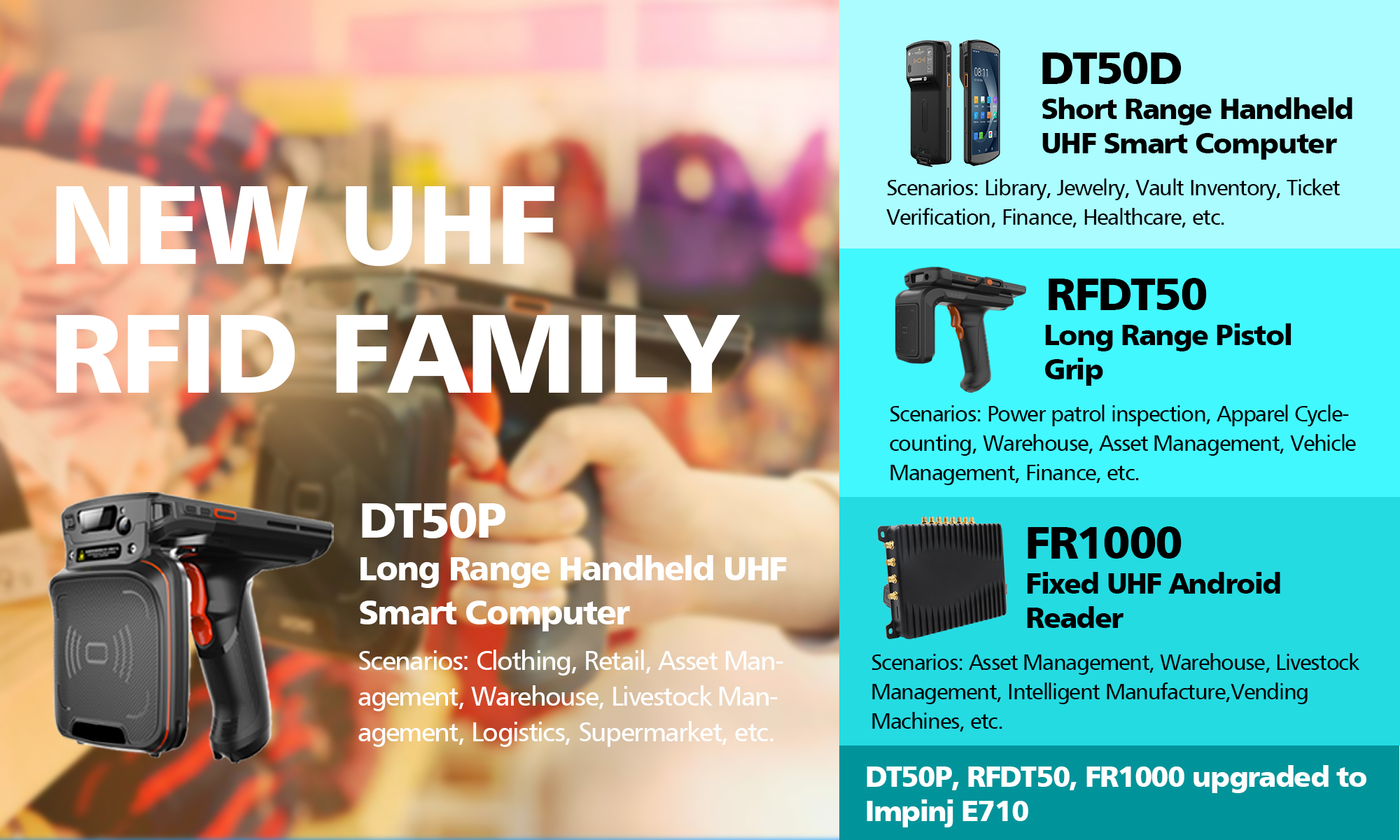Time: 2023-04-07 Views:
UHF (ultra-high frequency) equipment is widely used in various industries for data collection, inventory management, asset tracking, and more. UHF equipment can read and write RFID tags at a long distance and high speed, making it more efficient and accurate than traditional barcode scanning methods. However, not all UHF equipment is the same. Different models have different performance and features, which affect their suitability for different application scenarios.

One of the most popular UHF equipment in the market is the handheld UHF PDA, which combines the functions of a UHF reader in one device. A handheld UHF PDA can scan RFID tags, take photos, access the internet, and run various applications. It is portable, versatile, and easy to use. However, not all handheld UHF PDAs are the same either. Different models have different chips, which affect their reading range, speed, sensitivity, and battery life.
One of the most advanced chips in the market is the Impinj E710, which is the latest generation of Impinj's RAIN RFID reader chips. The Impinj E710 offers several advantages over previous chips, such as:
- Longer reading range: The Impinj E710 can read RFID tags up to 18 meters away, which is twice as far as previous chips. This means that users can scan more tags in less time and from a greater distance.
- Faster reading speed: The Impinj E710 can read up to 1,500 tags per second, which is three times faster than previous chips. This means that users can scan large volumes of tags quickly and efficiently.
- Higher sensitivity: The Impinj E710 can read RFID tags with a lower signal strength, which means that it can read tags that are smaller, farther away, or embedded in metal or liquid. This means that users can scan more types of tags in more challenging environments.
- Longer battery life: The Impinj E710 consumes less power than previous chips, which means that it can run longer on a single charge. This means that users can use the handheld UHF PDA for longer periods of time without worrying about running out of battery.
These advantages make the Impinj E710 chip ideal for various application scenarios of UHF equipment, such as:
- Warehouse management: Users can use the handheld UHF PDA to scan pallets, boxes, and items in the warehouse, and update the inventory information in real time. Users can also use the handheld UHF PDA to locate items in the warehouse by using the geolocation feature of the Impinj E710 chip.
- Retail management: Users can use the handheld UHF PDA to scan products on the shelves, and check the price, stock level, and expiration date of each product. Users can also use the handheld UHF PDA to perform inventory counts, replenishment orders, and anti-theft checks.
- Asset management: Users can use the handheld UHF PDA to scan assets such as tools, equipment, vehicles, and documents, and track their location, status, and usage history. Users can also use the handheld UHF PDA to perform asset audits, maintenance checks, and depreciation calculations.
- Healthcare management: Users can use the handheld UHF PDA to scan patients' wristbands, medications, blood bags, and medical devices, and verify their identity, dosage, compatibility, and availability. Users can also use the handheld UHF PDA to monitor patients' vital signs, allergies, and medical records.
In conclusion, the handheld UHF PDA upgraded to Impinj E710 is a powerful and versatile device that can improve the efficiency and accuracy of data collection and management in various industries. By choosing a handheld UHF PDA with an Impinj E710 chip, users can enjoy longer reading range,
faster reading speed,
higher sensitivity,
and longer battery life,
and benefit from more application scenarios of UHF equipment.

